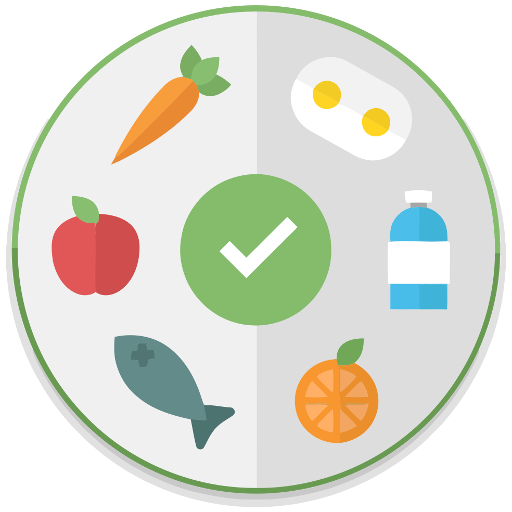
Food and body image are inextricably linked. Higher self-esteem and confidence are correlated with better nutrition. A healthier mind and body can be achieved by improving body care. As our mental health and physical health are directly tied, it is important to provide our bodies with adequate nutrition. These are some tips to improve your body image after birth: Regular exercise and a healthy diet can make you feel and look better.
First, talk about nutrition and body image with your child. Discuss with your child the importance and joy of healthy eating habits and being happy with one's body. Next, keep any comments about her physical appearance to an absolute minimum. Also, praise your child for her physical attributes and not her weight. A registered dietitian, or psychologist may be able to help you. These treatments are designed to help you have a healthy body image, and a positive relationship about food.

The fact sheet below will help you learn more about nutrition. You can also find more information about these topics in our other articles. It will give you a better understanding of how food and body images relate. This will allow you to be more accepting of yourself as a person. It will also improve your self-esteem. This will help you make better choices regarding your diet and lifestyle. You will be happier with your skin and head, and more likely you are to eat healthy foods.
Positive social circles can help improve your body image. People with positive relationships will have a better body image. It is important to make time for real life interactions with friends and family. Avoid being bombarded by unrealistic images on social media of a perfect body. Be aware of negative images on the internet. The internet can cause a distortion of your body and health.
A poor body image can result from many things. Children who have a poor body image compare themselves to ideals. Although this is not always a problem, it can cause depression and even physical illness. It's how we raise our kids' self-esteems and body images that is most important. This is a good place for you to start. Both of these factors have a major impact on your health. Understanding the relationship between diet and health is the first step.

A healthy body image is an important component of a healthy lifestyle. Healthy body image is about feeling comfortable in your skin. It is important not to compare your body with one size. You can achieve health and happiness by eating well and exercising. However, the first step is to understand your body and its needs. This is an important step in ensuring a healthy future.
FAQ
Which lifestyle is best for your health?
Healthy lifestyles include eating healthy food, regular exercise, good sleep, and avoiding stress. If you follow these guidelines, you will be able to lead a long and healthy life.
Start small by changing your diet and exercising routine. Try walking for 30 minutes each day to lose weight. You can also take up dancing or swimming if you are looking to be more active. A Fitbit or Strava online program that tracks your activity can be joined.
What is the difference between a virus and a bacterium?
A virus is a microscopic organism that cannot reproduce outside its host cell. A bacterium (or single-celled organism) reproduces by splitting itself into two. Viruses have a very small size (about 20 nanometers), while bacteria is larger (up to one micron).
Viruses can be spread by contact with bodily fluids containing infected substances, such as saliva, urine and semen. Bacteria is usually spread directly from surfaces or objects contaminated with bacteria.
Viruses can enter our bodies through cuts, scrapes, bites, or other breaks in the skin. They can also be transmitted through the eyes, nose, mouth, ears, rectum, and anus.
Bacteria can enter our bodies through wounds, cuts, scrapes, burns, insect stings, or other breaks in our skin. They can also get into our bodies via food, water or soil.
Both viruses and bacteria can cause illness. But viruses can't multiply within their hosts. Viral infections can only cause diseases in living cells.
Bacteria can grow in their hosts and cause disease. They can even invade other parts of the body. We need antibiotics to get rid of them.
How does weight change with age?
How do I know if my bodyweight changes?
If there are less calories than muscle mass, then weight loss is possible. This means that daily energy needs must be greater than the calories consumed. The most common cause of weight loss is decreased activity levels. Other causes include illness, stress, pregnancy, hormonal imbalances, certain medications, and poor eating habits. Weight gain occurs when there is more fat than muscle mass. It occurs when people consume more calories each day than they use. It can be caused by overeating or increased physical activity as well hormonal changes.
Our bodies lose weight mainly because we eat less calories that we burn. The main reason we lose weight is because we exercise more often. This increases our metabolism rate and burns more calories each day. However, this doesn't mean that we'll necessarily get thinner; what matters is whether or not we're losing fat or gaining muscle. We will lose weight if we burn more calories than we consume. If we consume more calories that we burn, we are actually storing them in fat.
As we age, our ability to move around is slower and we are less mobile. We also tend have less food to eat than when our children were young. As a result, we gain weight. On the flipside, we are more muscular than we really need and appear bigger.
If you don't weigh yourself every week, it's impossible to determine how much weight has been lost. There are many ways to determine your weight. You can check your waist size, your hips, your thighs, your arms, etc. Some prefer to use the bathroom scales, others prefer to use tape measures.
To track your progress, weigh yourself once a week. Measure your waistline once per month. To see how far you have come, you can take photos of yourself every few month.
You can also look up your height, weight and body measurements online to determine how much you weigh. You'd likely weigh 180 pounds if you were 5'10 tall and 180 pounds if you were 180lbs.
How can I get enough vitamins
Most of your daily vitamin requirements can be met by diet alone. However, if you are deficient in any particular vitamin, taking supplements can help. A multivitamin supplement can provide all the vitamins you require. You can also get individual vitamins from your local pharmacy.
Talk to your doctor if you have concerns about your nutritional intake. For example, dark green leafy vegetables such as spinach, broccoli, kale, collard greens, turnip greens, mustard greens, bok choy, romaine lettuce, arugula, and Swiss chard are rich in vitamins K and E. Other good sources include oranges, tomatoes, strawberries, cantaloupe, carrots, sweet potatoes, pumpkin, and squash.
Ask your doctor if there is any doubt about how much vitamin you should be taking. Your medical history and current health will help you determine the best dosage.
How do you measure body fat?
A Body Fat Analyzer (BFA) is the best method to measure bodyfat. These devices are used for measuring the percentage of body fat in people who want to lose weight.
What is the difference between sugar and fat?
Fat can be a source of energy that is obtained from food. Sugar is a sweet substance that can be found naturally in fruits or vegetables. Both fats and sugars provide the same number of calories. But fats are twice as calories as sugars.
Fats are stored in your body and can cause obesity. They cause cholesterol buildup which can lead to strokes and heart attacks.
Sugars are quickly absorbed into the body and provide instant fuel. This causes blood glucose levels to rise. High blood sugar levels can cause type II diabetes.
Is cold a sign of a weak immune response?
It has been said that there are two types of people on the planet: those who love winter, and those who don't. It doesn't matter if you love it or not, it is possible to wonder why it makes you feel so miserable when it gets cold outside.
The reason is simple: Our bodies are made to function well in warm temperatures. Our bodies were designed to thrive in hot weather because this is where the majority of our food sources are.
Now, however, we live in a completely different environment to how our ancestors lived. We spend more time indoors, are exposed to extreme temperatures (cold/heat), and eat processed food rather than fresh.
Our bodies aren’t accustomed to such extremes. When we do venture out, our bodies are unable to cope with the extremes.
However, there are ways to counter these effects. Staying hydrated is one way to combat this. Water is essential for your body to function properly and eliminate toxins.
A healthy diet is another important thing. Consuming healthy food helps maintain your body's optimal temperature. This is especially helpful for people who spend a lot of time indoors.
Finally, consider taking a few minutes each morning to meditate. Meditation can help you relax your mind, body and soul. This makes it easier to manage stress and illnesses.
Statistics
- WHO recommends reducing saturated fats to less than 10% of total energy intake; reducing trans-fats to less than 1% of total energy intake; and replacing both saturated fats and trans-fats to unsaturated fats. (who.int)
- WHO recommends consuming less than 5% of total energy intake for additional health benefits. (who.int)
- nutrients.[17]X Research sourceWhole grains to try include: 100% whole wheat pasta and bread, brown rice, whole grain oats, farro, millet, quinoa, and barley. (wikihow.com)
- The Dietary Guidelines for Americans recommend keeping added sugar intake below 10% of your daily calorie intake, while the World Health Organization recommends slashing added sugars to 5% or less of your daily calories for optimal health (59Trusted (healthline.com)
External Links
How To
How to Live a Healthful Lifestyle
A healthy lifestyle is one that allows you to maintain your weight, your health, and your fitness. It's a way of living that includes eating well, exercising regularly, getting enough sleep and avoiding harmful substances such as alcohol, caffeine, tobacco, drugs, and so on. A healthy lifestyle will help you feel great and stay in shape. A healthy lifestyle can help reduce your risk of developing chronic diseases such as heart disease, strokes, diabetes, cancer and osteoporosis.
The main goal of this project was to provide a step-by-step guide on how to live a healthier life. The first part of the project consisted of writing the introduction, which explains what a healthy lifestyle is, why people should adopt a healthy lifestyle and who we are. Then, I wrote the body paragraphs, which consist of different tips on how to keep a healthy lifestyle. Finally, I wrote the conclusion. This summarizes the entire article, and provides additional resources, if needed.
This assignment helped me to understand how to write concise paragraphs. Additionally, I learned how organize my thoughts into topic sentences and supporting information. Moreover, I improved my research skills because I had to find specific sources and cite them properly. Lastly, I gained knowledge on how to use proper grammar when writing.